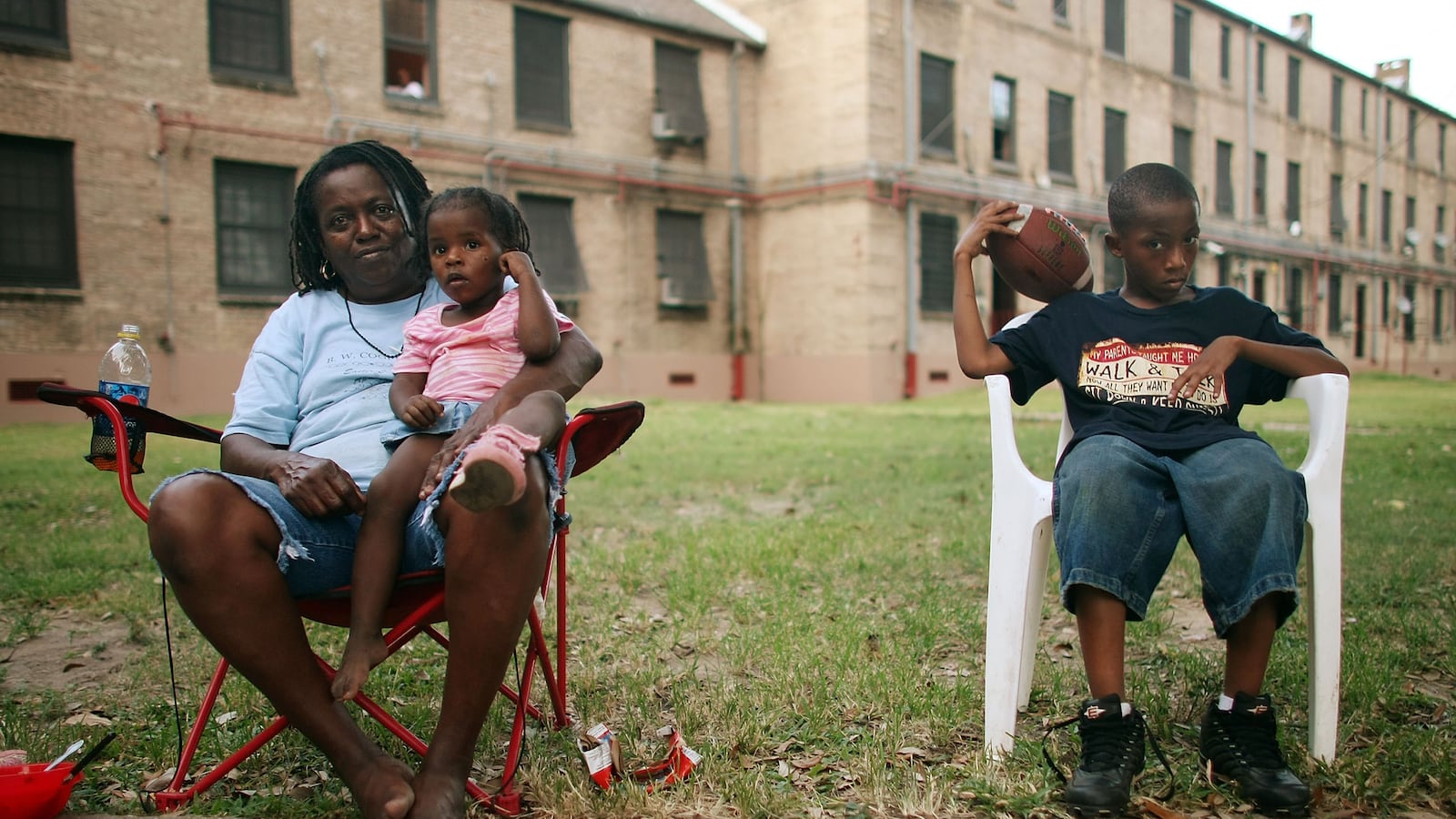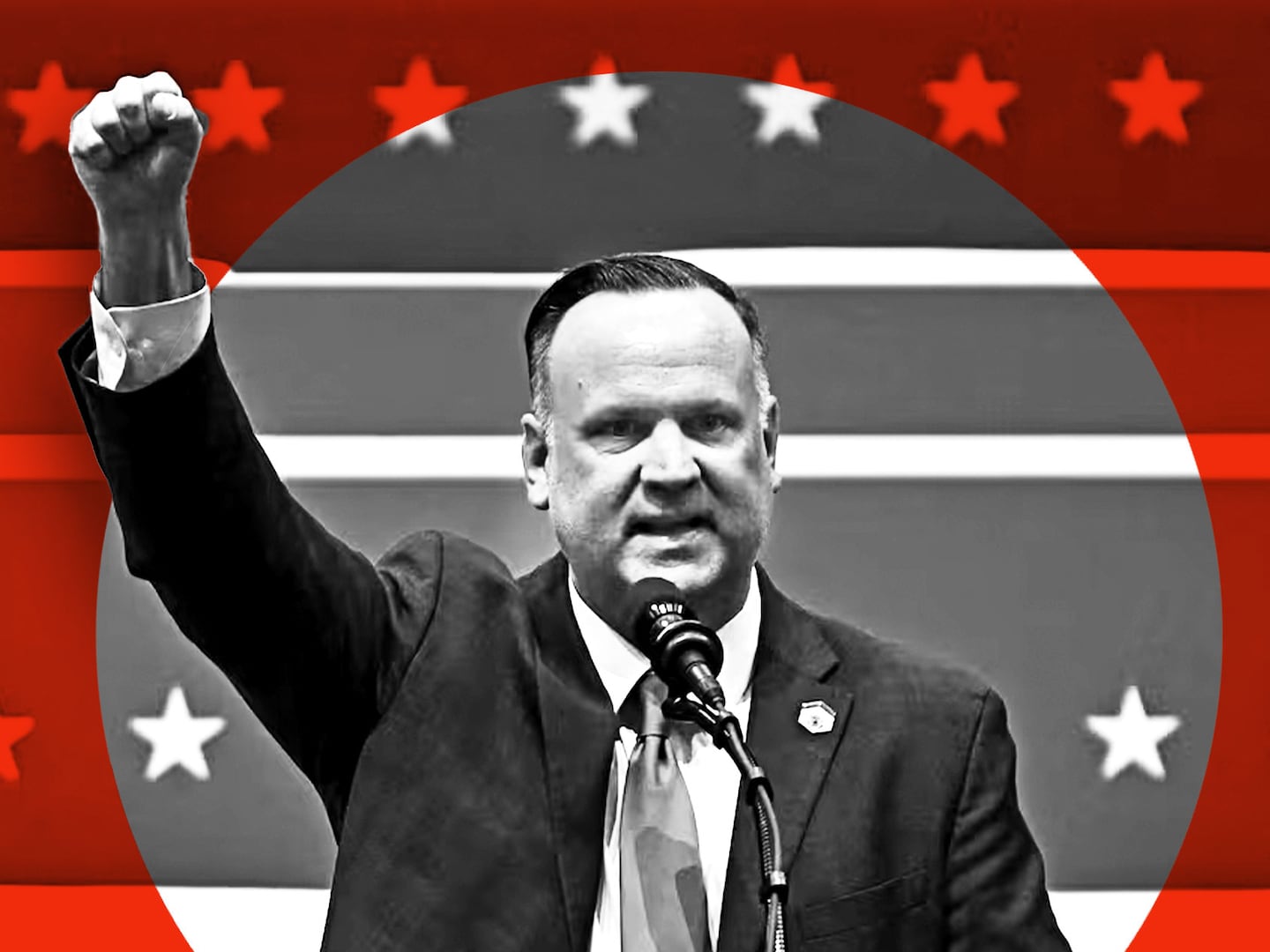
Yesterday, apropos of Paul Ryan’s remarks on “inner-city poverty” and a culture that “doesn’t value work,” I wrote about the policy that went into building our inner-cities and depriving whole communities of wealth and opportunity. Likewise, at MSNBC, Ned Resnikoff wrote an excellent piece on the wide income and wealth disparities between blacks and whites. “ In 1984,” he writes, “the white-to-black wealth ratio was 12-to–1…But over the next 14 years the wealth gap began to grow once again, until it had skyrocketed up to 19-to–1 in 2009.”
A large part of this, he explains, has everything to do with housing discrimination:
Disparities in homeownership are a major driver of the racial wealth gap, according to a recent study from Brandeis University. According to the authors of the report, “redlining [a form of discrimination in banking or insurance practices], discriminatory mortgage-lending practices, lack of access to credit, and lower incomes have blocked the homeownership path for African-Americans while creating and reinforcing communities segregated by race.”
In my earlier piece, I alluded to these policies and practices, but didn’t describe them. But it’s worth taking the time to do exactly that, given the extent to which they were a huge influence on the housing landscape of the United States, and key to creating the ghettos and housing projects that litter our inner-cities. Obviously, this won’t be comprehensive, so consider it an introduction to these issues.
Redlining is the practice of denying key services (like home loans and insurance) or increasing their costs for residents in a defined geographical area. In theory, this could be used against anyone. In reality, it was almost exclusively a tool to force blacks (and other minorities) into particular geographic areas. The practice began with the National Housing Act of 1934, which established the Federal Housing Administration, as well as the Federal Home Loan Bank Board. It was this agency which created “residential security maps” for several cities to determine the safety of real estate investments in selected areas.
You should already see where this is going: Existing black neighborhoods were lined as unsafe, and thus ineligible for financing. For prospective property owner, this was terrible: Absent cash on hand, there was no way to afford a home or a business in your area. What’s more, blacks were all but barred from entering white neighborhoods, if not by restrictive racial covenants (which forbid property sales to African Americans and other minorities) then by violence and intimidation. In Chicago, for instance, anti-black riots were a regular part of public life. Here’s Arnold Hirsch, author of Making the Second Ghetto: Race and Housing in Chicago, 1940–1960:
On July 28, 1957, a crowd of 6,000 to 7,000 whites attacked 100 black picnickers who occupied a portion of the park that had previously been “reserved” for whites. Though blacks had used the park in the past, they were customarily restricted to certain portions of it. More than 500 police were needed to calm the area after two days of disturbances. On the first day alone at least forty-seven persons were injured and sixty to seventy cars stoned. Rioters spilled out of the park, attacked police officers attempting arrests, and, eventually, placed the entire area between the nearby Trumbull Park Homes and Calumet Park in turmoil. Police squadrons had to form a “flying wedge” to break through the crowd to rescue blacks besieged in the park.
In the late 1940s, he writes, there was “one racially motivated bombing or arson” every twenty days.
In short, redlining forced blacks into particular areas and then starved those areas of affordable capital. Combined with widespread job discrimination—which barred blacks from public employment and forced them into low-wage labor—you had neighborhoods that were impoverished by design.
Of course, at the same time of all of this, there was a mass migration of African Americans from the South to the industrial cities of the Midwest and Northeast. Some were poor, yes, but many were what we’d call working or lower-middle class, and more still were prospective homebuyers. In places like Chicago, white real estate agents—often with the sanction of local government—took advantage of their hope with a practice called “contract buying.” Here’s Hirsch, again:
When selling on contract, the speculator offered the home to a black purchaser for a relatively low down payment – often several hundred dollars would suffice. For bringing the home within the reach of a black purchaser, however, the speculator extracted a considerable price. In the Commission on Human Relations study, the percentage increase in the cost of the home from the speculator’s purchase price to that of the black consumer ranged from a minimum of 35% to 115%; the average increase was 73%.
This, it should be said, bears an eerie similarity to the targeted, predatory lending of the last decade. Of course, it was dramatically worse. Tenants had no equity in their homes until the terms of the contract were fulfilled, and speculators could evict tenants for missing a payment, regardless of their history. At least one speculator, notes Hirsch, was able to retrieve more than 150% of his investment (in a year) by evicting those who missed installments and collecting successive down payments. And there was no recourse: Unlike their white counterparts, who in the 1940s and 50s, could take advantage of the G.I. Bill, blacks couldn’t obtain conventional financing or subsidized loans. Contact lending was the only option, and it amounted to large scale (and sanctioned) wealth theft.
Related to this was block-busting. Remember, many of these cities faced a housing shortage, due to the large number of black migrants. Panicked by the prospect of black neighbors—and facilitated by highways and subsidized mortgage loans—countless whites left the cities for the suburbs. They were pushed along by “block-busters”; unscrupulous realtors who encouraged blacks to move into white areas (or created the appearance of transition), sparking an exodus and driving down prices. Once completed, more respectable realtors converted the homes and apartments into multi-family dwellings, cramming large groups into row houses meant for a handful of people. “In one Oakland apartment,” writes Hirsch, “the space that was rented to one white family at $25 per month was able to house three black families at $100 per month.” Journalist Isabelle Wilkinson describes the human side of this in her wonderful book, The Warmth of Other Suns.
Block-busting inspired tremendous violence and anti-black sentiment, especially from working-class whites, who were often outbid by blacks, but couldn’t afford suburban housing outside of the city. What’s more, it—along with contract-buying and the destruction of the tax base—helped create the perception that blacks were responsible for the deterioration of a neighborhood.
All of these tools and approaches were facilitated by the federal government and its partners at the state and local level. For decades, it was a project of Democrats and Republicans, who worked to appease a white supremacist majority, and often, shared their assumptions. This continued into the 1960s, and arguably, never stopped: Public housing projects, for instance, were placed in these segregated, depressed neighborhoods as a compromise with conservatives who opposed them outright. This, in turn, ensured concentrated poverty and all its attendant problems, as well as bad schools and poor public services. The Fair Housing Act of 1968 was meant to tackle all of this, but as Nikole Hannah-Jones details for ProPublica, it saw sporadic enforcement, if that.
After a half century (or more), it’s not hard to see how we get to here from there: When you prevent a whole class of people from building wealth, accessing capital, or leaving impoverished areas, you guarantee cultural dysfunction and deep, generational poverty. When it comes to inner-city poverty—we built that.






